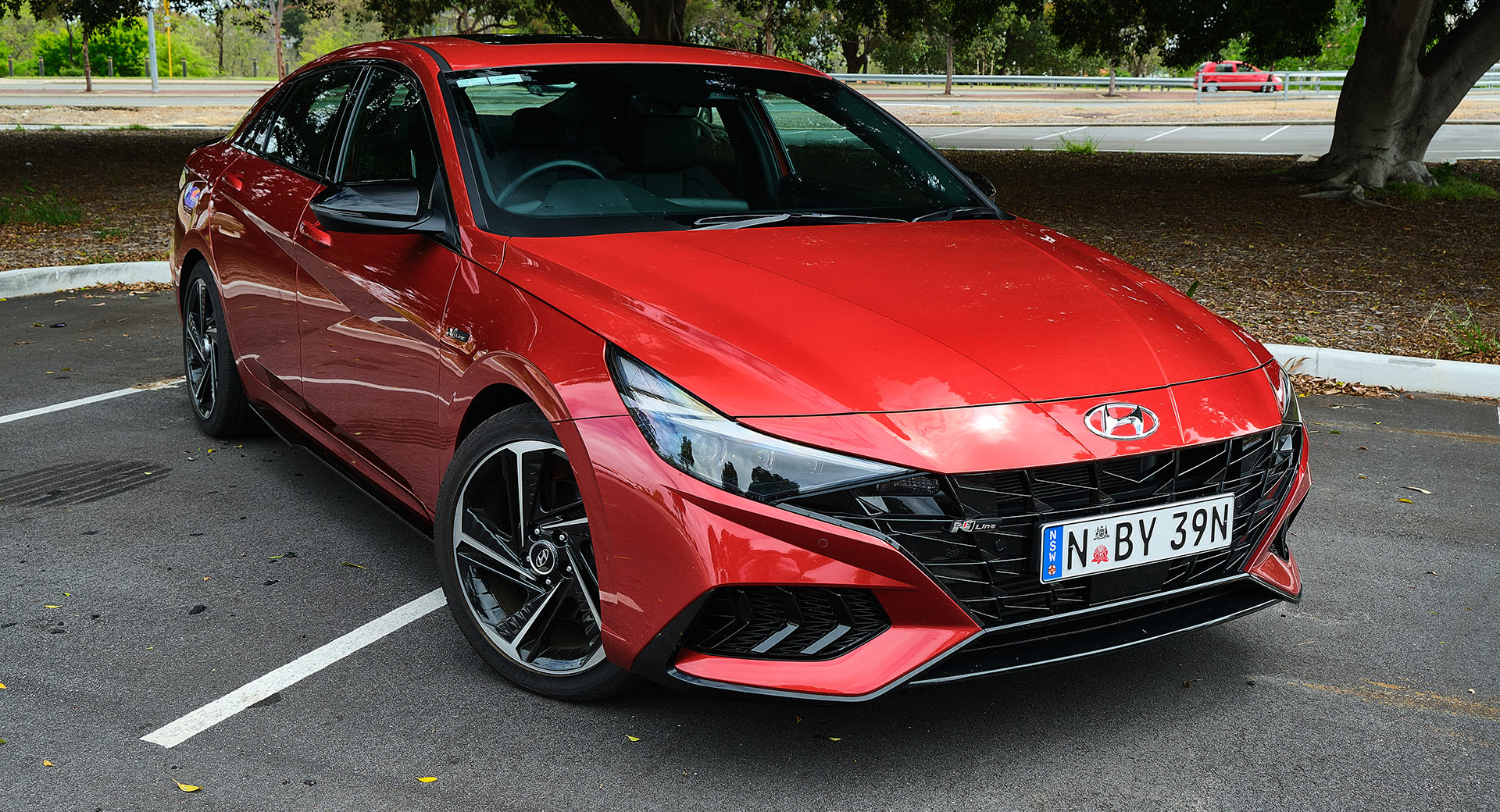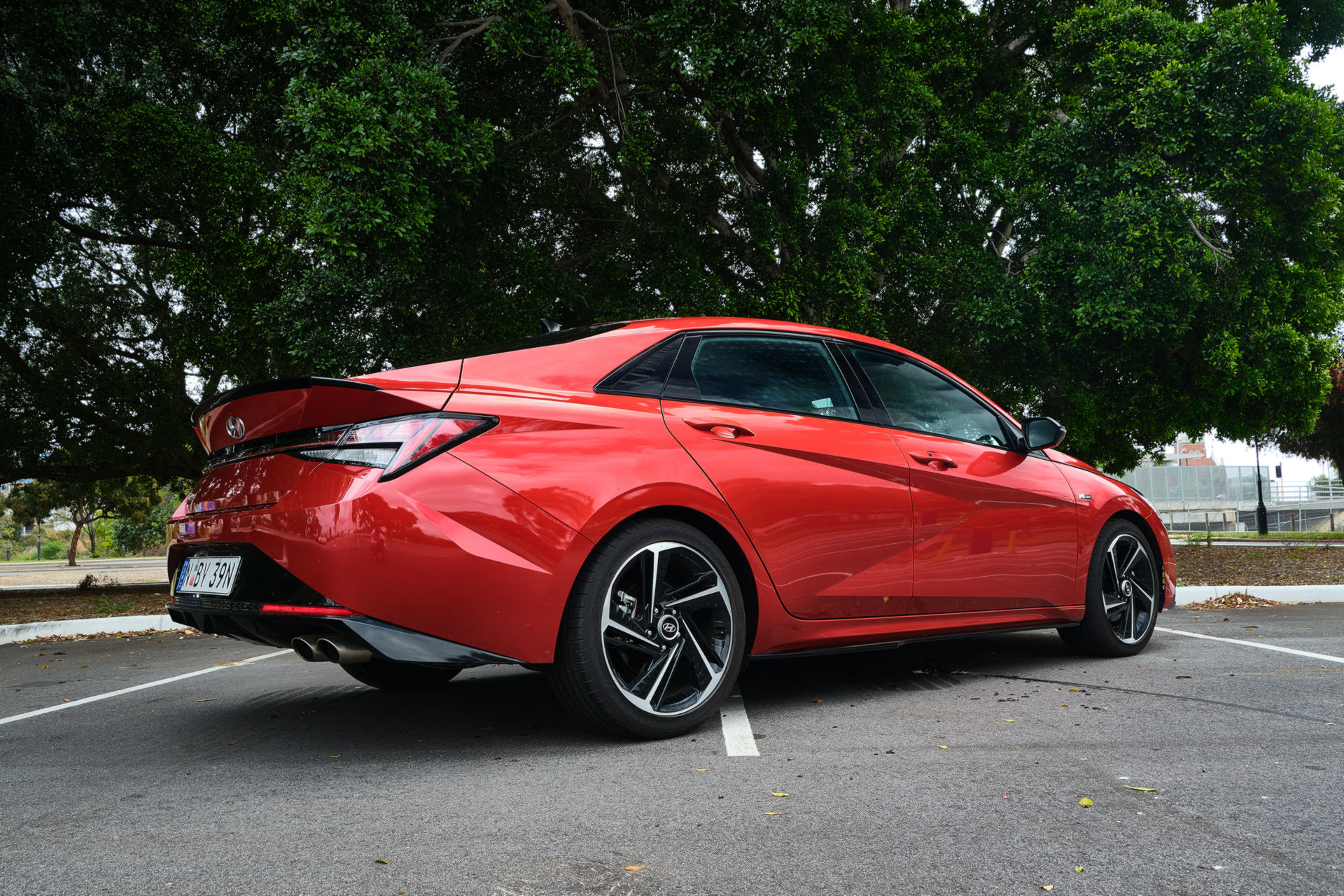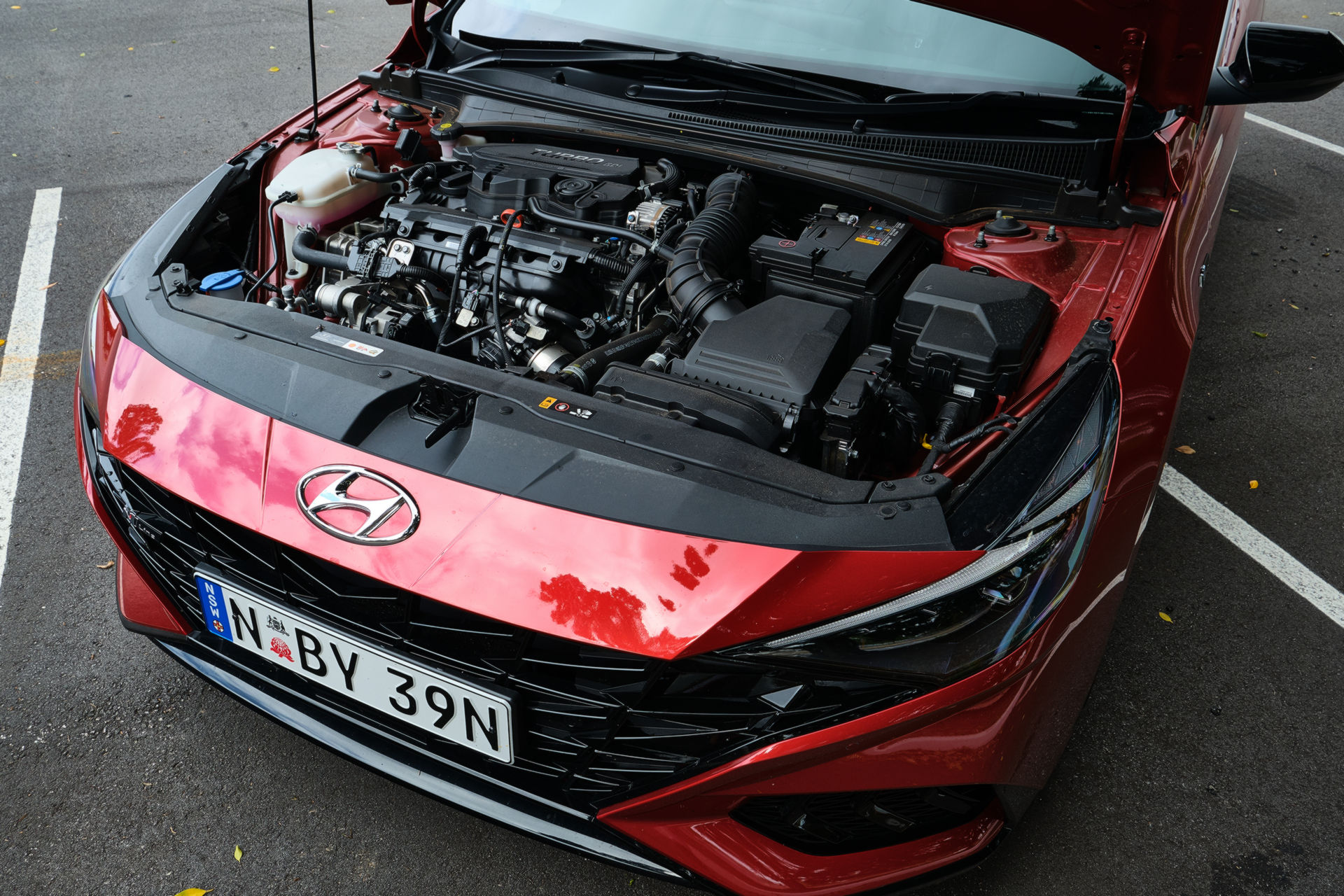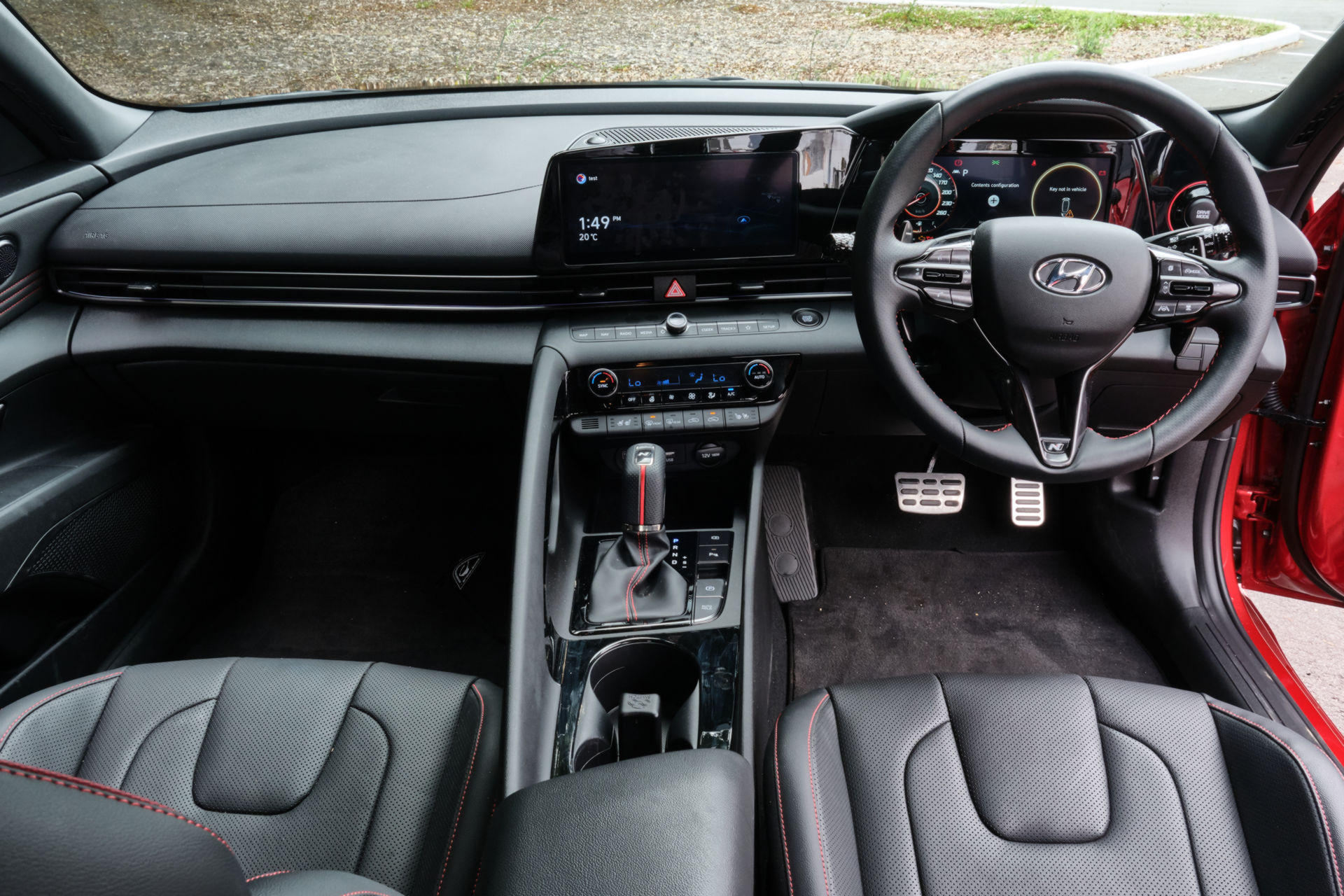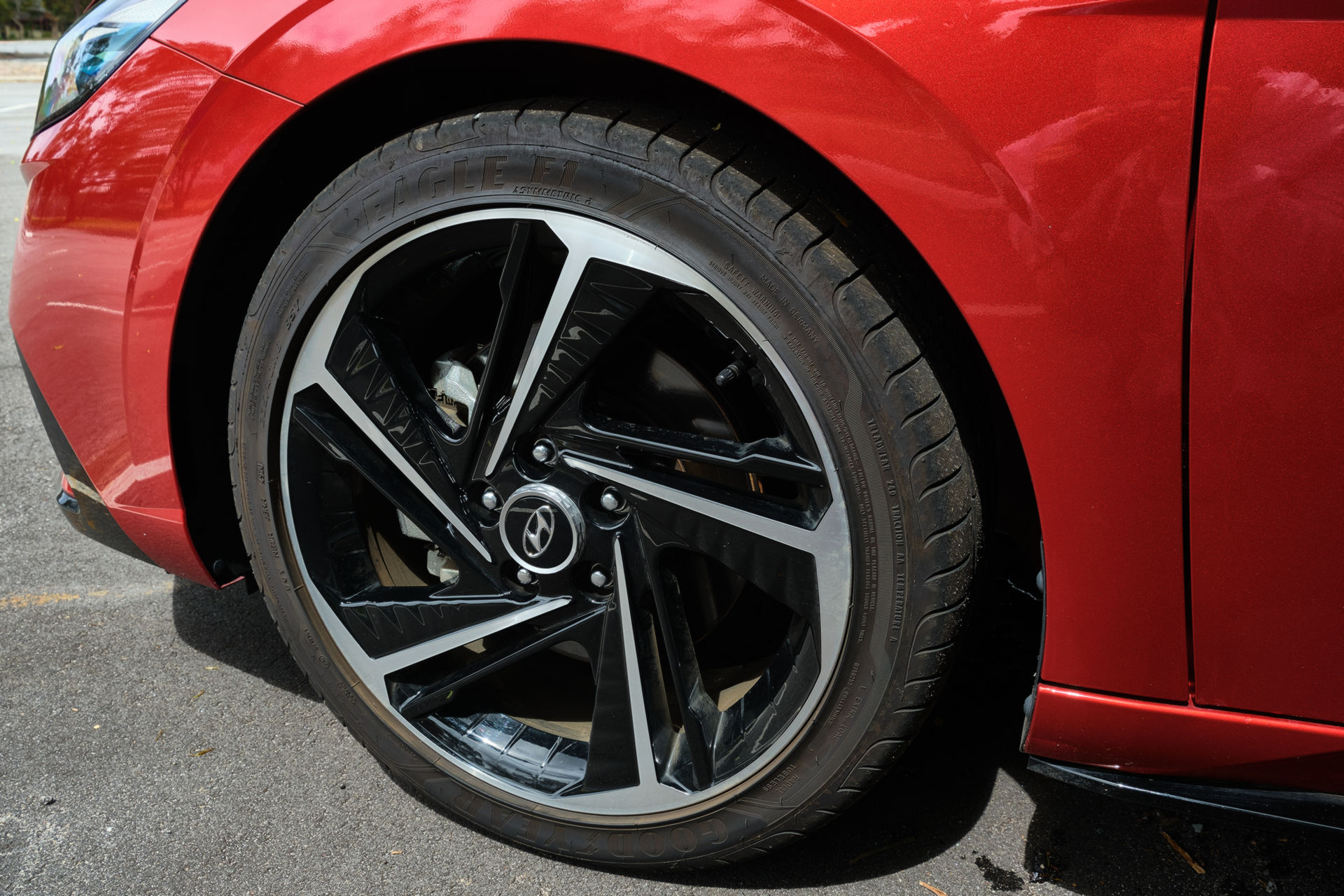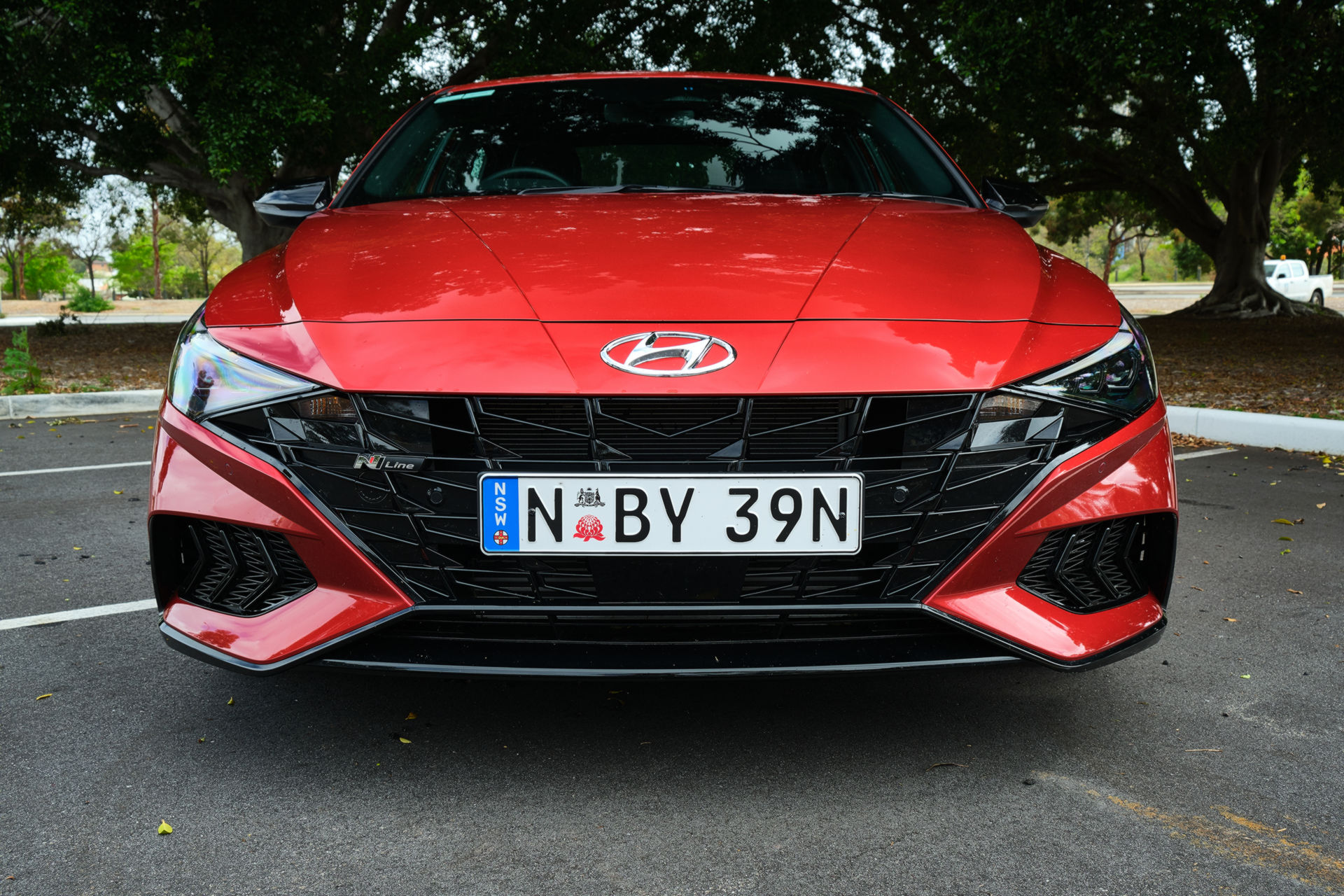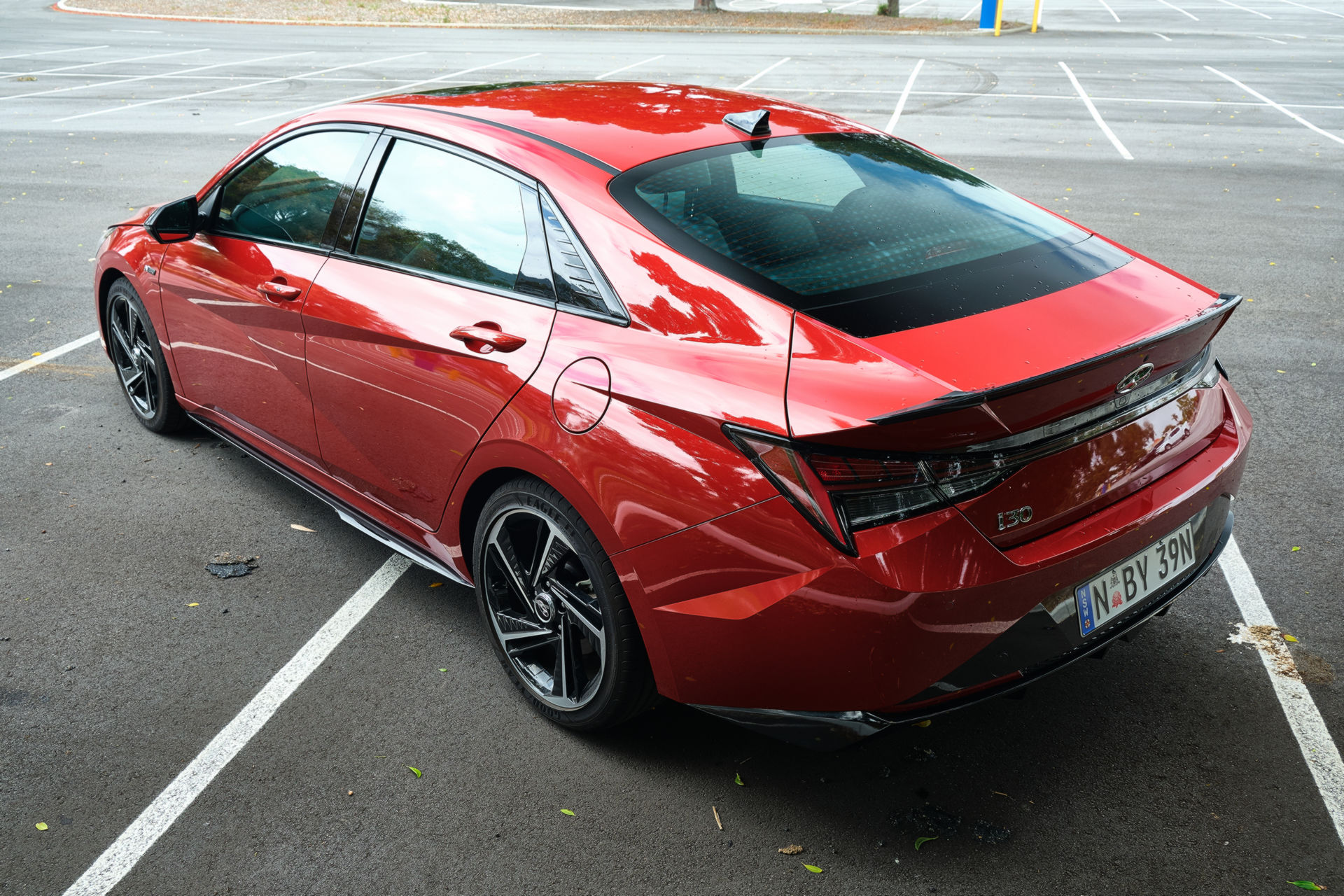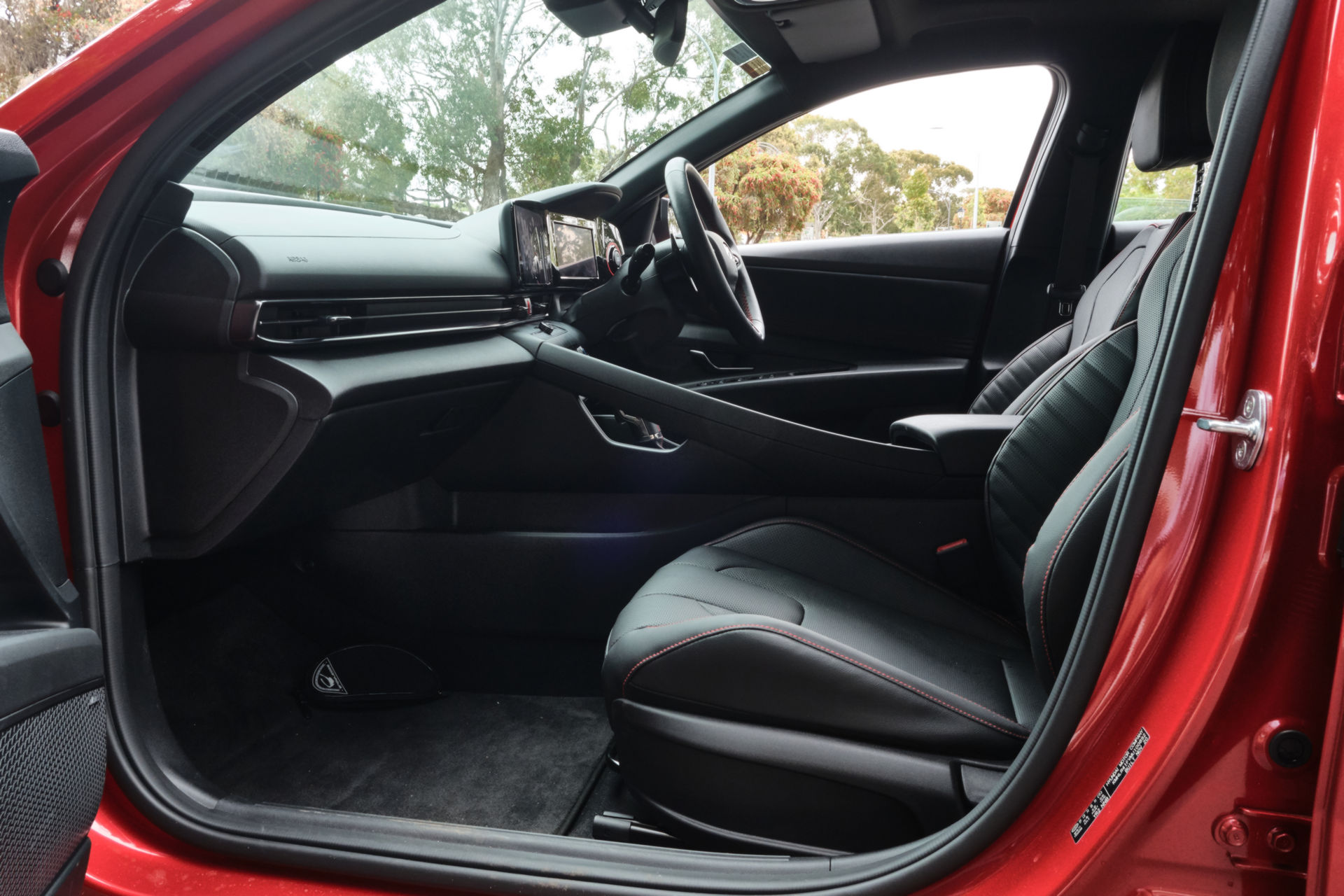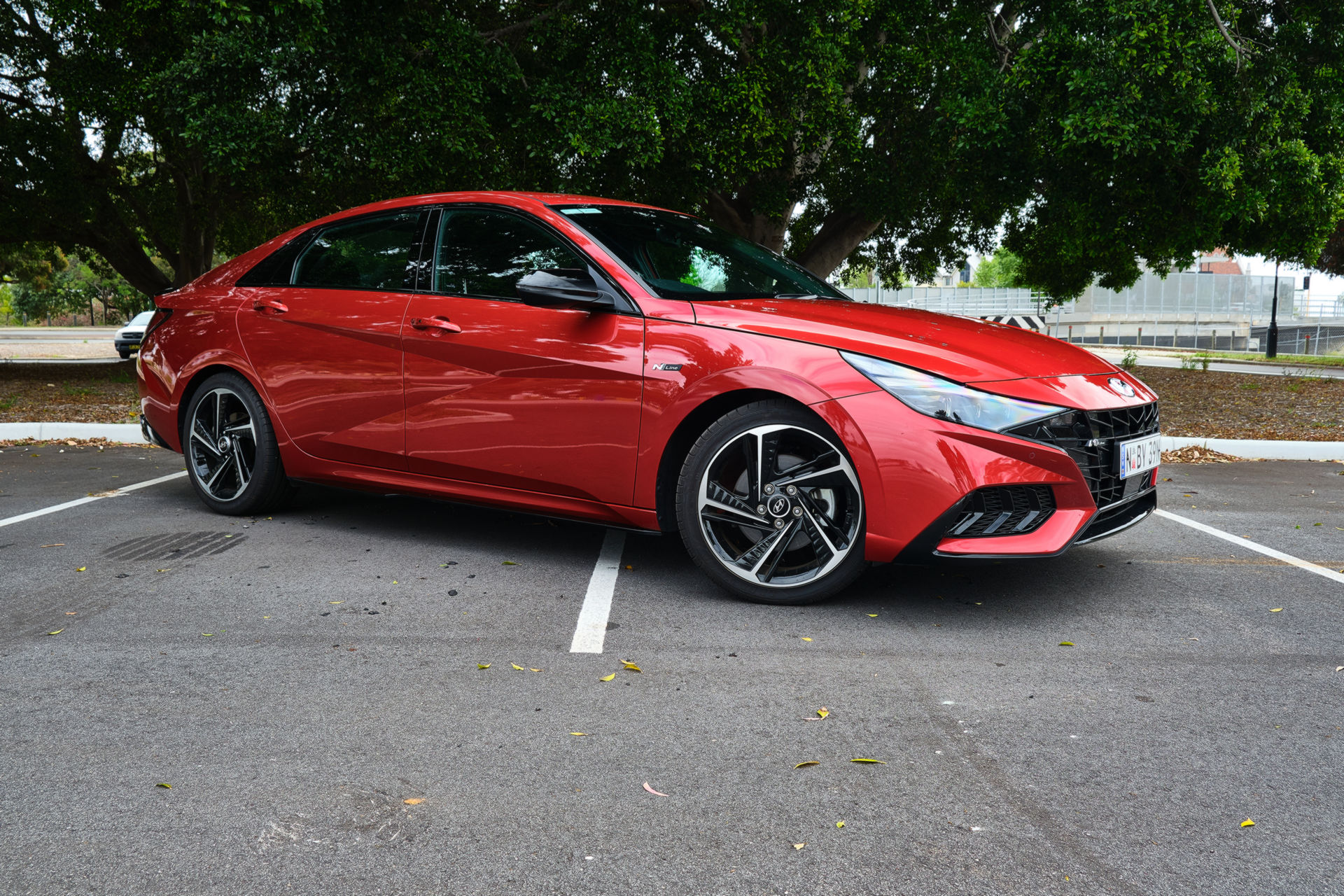This is the 2021 Hyundai i30 Sedan N Line Premium – and it’s quite striking, isn’t it?
To most readers, the term ‘i30 Sedan’ may be a little foreign. Isn’t the i30 supposed to be a hatchback? In Australia, and most other markets, the i30 is indeed sold as a hatchback but Down Under, it has also been sold as a sedan since the second half of last year. Don’t let the name fool you, however; the i30 Sedan is exactly the same as the Elantra you’re probably more familiar with – a name that was used in Australia for the previous generation but has since been dropped.
A bold design
So, what exactly does the Hyundai i30 Sedan offer? Well, apart from being a very compelling vehicle (more on that later), it adopts the South Korean automaker’s ‘Sensuous Sportiness’ design language and is much more characterful than its predecessor.
It is hard not to gasp when you first lay eyes on the i30 Sedan. It has a mean and purposeful design more similar to the Tucson and Sonata than the i30 hatchback. Found at the front is a large, angular grille finished in black and complemented by large air intakes and a black splitter in N Line configuration.
Shades of the current Tucson are especially evident along the sides with similarly sharp creases and body lines that draw your eyes toward the sleek rear end that sports LED lights, a prominent light bar, and in N-Line configuration, a black diffuser and black lip spoiler. A set of 18-inch wheels also catch the eye.
Solid underpinnings
Found beneath the skin of the 2021 i30 N Sedan is the automaker’s K3 platform that is lighter, safer, and stronger than its predecessor. The car has grown by 2.2 inches (55 mm) over the old car and is 1 inch (25 mm) wider. It also has a wheelbase of 107.1 inches (2,720 mm), 0.8 inches (20 mm) longer than the 2020 model. The overall height of the sedan has been dropped by 0.8 inches (20 mm) and now sits at 56.5 inches (1,435 mm). These changes mean the i30 Sedan is longer, wider, and lower than the 2020 Toyota Corolla, Honda Civic, Nissan Sentra, and Mazda3.
Logic would dictate that as the car’s footprint is much larger than the i30 hatch with its 104.3-inch (2,650 mm wheelbase), it should also weigh more. However, that’s not the case as the i30 N Line Sedan tips the scales at 3,053 lbs (1,385 kg), roughly 110 lbs (50 kg) less than a similarly equipped i30 N Line hatch.
The example we tested was the N Line Premium which sits at the top of the local range until the full-blooded i30 N Sedan touches down next year. The N Line Premium, as well as the slightly less well-equipped N Line, comes exclusively with a 1.6-liter turbocharged Smartstream four-cylinder engine that delivers 201 hp (150 kW) and 195 lb-ft (265 Nm) of torque.
A number of different Hyundai and Kia models use this same basic engine, including the i30 N Line hatch. Crucially, it has been updated for use in the Sedan and has a different bore and stroke while also featuring an updated turbocharger. Working alongside this engine is a dual-clutch eight-speed transmission driving the front wheels.
No ordinary i30 interior
As mentioned, Australia’s i30 Sedan only really shares its name with the hatchback and this is immediately obvious when you first step inside. There is absolutely nothing about it that reminds you of the hatch. That’s a good thing as the hatch’s cabin is starting to feel outdated, particularly compared to newer rivals like the Mazda3.
Fitted as standard on the N Line Premium is a digital instrument cluster and a 10.25-inch touchscreen, both shrouded with thick piano black bezels. Unlike the hatch, both the infotainment screen and all the crucial media and HVAC controls are angled towards the driver. A prominent handle on the passenger side of the transmission tunnel serves to neatly break up the front row into distinct sections for the driver and passenger, giving a cockpit-like feel to the driving position.
Read Also: Hyundai Unveils America’s 2022 Elantra N With Up To 286 HP And A Manual Gearbox
Our test car was also equipped with soft and supple black leather seats with red contrast stitching and featured a configurable ambient lighting system, as well as a heated steering wheel, heated seats, wired Apple CarPlay and Android Auto, and Qi wireless smartphone charging. It is a nice place to spend time in and soft-touch surfaces add to the premium feel of the cabin. A sunroof is also standard on N Line Premium models.
The drive
After first taking a seat in the i30 Sedan N Line Premium, we were immediately impressed with the fit and finish but disappointed that the supportive seat didn’t lower quite as much as we would have wanted. Once we started driving, that issue faded into insignificance.
Hyundai’s 1.6-liter turbocharged four-cylinder acts as a great middle ground between the entry-level, naturally aspirated mill the car is offered with and the 2.0-liter turbo mill already being used in the Elantra N sold in other markets. By no means does the engine make the i30 Sedan N Line feel like a performance car but it does offer up good acceleration and will be more than adequate for most buyers. It is also quite fuel efficient as we averaged a touch over 7.0 l/100 km (33 U.S. mpg) while testing the car.
This engine has a grand total of 4 hp (3 kW) more than the engine of the Hyundai Kona N Line Premium that we drove a few months ago. Unsurprisingly, you cannot feel that extra grunt and in a straight line, the i30 Sedan N Line is just as nippy as its crossover sibling.
The eight-speed dual-clutch gearbox acts as the perfect accomplice to this engine. While some dual-clutch transmissions can be somewhat hesitant at low speeds, Hyundai has managed to engineer-out most of these issues. We found it best to keep the transmission in its automatic mode for the smoothest driving experience. If you do want to have some fun, there are some nice paddle shifters mounted behind the steering wheel. This is a big plus as the Kona N Line lacks paddle shifters for some reason.
Hyundai Australia has given the i30 Sedan its own suspension tune to suit local roads and it results in a comfortable yet sporty ride in most driving scenarios. Throughout our week with the car, we covered a mix of highway roads, city streets, and country lanes and found it to be better suited to the latter two, rather than long highway jaunts.
For all intents and purposes, the Hyundai i30 Sedan is a very comfortable car to cover long miles in along motorways. However, the Goodyear Eagle F1 tires produce quite a lot of road noise once the speedometer ticks over 100 km/h (62 mph) and it can quickly become tiresome (pun intended). The wing mirrors also seemed to contribute to the wind noise.
When driven in a sportier manner, the tire and suspension combination does work well. Steering response and turn-in are both accurate and precise and it is easy to place the car perfectly around a corner, particularly at moderate to high speeds. Grip is good and the rear end can become quite playful when you’re driving in either the Sport or Sport+ mode.
Don’t give up on sedans just yet
For us, the highlight of the 2021 i30 Sedan/Elantra is the interior, hands down. It is a comfortable and premium place to be, regardless of the size of occupants. In fact, at 6’2, I had more than enough headroom and legroom in the back seat, so carrying four adults is no issue. Front legroom sits at 42.3 inches (1,074 mm) while rear legroom is an impressive 38 inches (965 mm), 2.3 inches (58 mm) more than the old Elantra and 0.6 inches (15 mm) more than the all-new 11th-generation Honda Civic. Front headroom sits at 38.7 inches (982 mm) with the sunroof (40.6 inches/1,031 mm without) while rear headroom is 37.3 inches (947 mm), 0.2 inches (5 mm) more than the Civic. The trunk of the i30 Sedan also swallows up 474 liters (16.7 cubic-feet), more than big enough to fit a couple of large suitcases and/or duffle bags that owners may need.
Australian pricing for the 2021 i30 Sedan starts at AU$28,253 (US$21,161) for the Active, AU$34,157 (US$25,583) for the N Line, AU$34,700 (US$25,990) for the Elite, and AU$41,830 (US$31,330) for the N Line Premium that we tested. Pricing for the i30 Sedan N hasn’t been announced but it should top AU$50,000 (US$37,450). In the United States, the Elantra range kicks off with the SE from US$19,850 and rises to $21,100 for the SEL, $24,250 for the N Line, and $25,600 for the Limited. The Elantra N should start at around $30,000.
In a world where crossovers and SUVs are starting to dominate the roads, it would be easy to dismiss the i30 Sedan as simply being part of a dying breed. However, it offers virtually all of the same practicality as a comparable Kona, has a far nicer interior, and to my eyes, also looks better. It’s also AU$5,205 (US$3,898) cheaper. I know which one I’d prefer to own.
